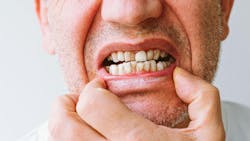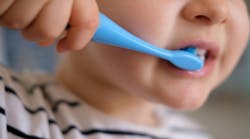Are fluoride bans going to escalate the country’s dental health crisis?
A 2025 dental health report by ValuePenguin found that more than one in three adults in America admit they don't go to the dentist regularly. And false claims made against fluoride, recently purported by Health and Human Services Secretary RFK Jr., have exacerbated the current state of poor oral health in the US.
Legislation restricting fluoride
Earlier this year, lawmakers in Ohio and South Carolina made proposals to restrict fluoride in drinking water. Then, Utah became the first state to ban it in March of 2025. In May, Florida followed suit—as of July 1, the 78.1% of Florida residents consuming fluoridated water will no longer have access to this resource.1
Health insurance expert Divya Sangameshwar believes the lack of fluoride access may worsen public oral health, saying: "With fluoride bans, tooth decay rates could rise, particularly among children in rural or low-income communities without access to regular dental care. For families, this means more expenses. More frequent cavities and other dental problems will lead to paying more for dental procedures like fillings, root canals and extractions."1
Decline of public oral health
Although fluoride has been proven to reduce cavity rates, access varies widely from state to state—however, poor oral health is widespread.
In 2024, 12.1% of children aged one to 17 had cavities or decayed teeth, and two in five (40.3%) adults were missing at least one permanent tooth. Access to fluoridated water was highest in the District of Columbia (100%), where tooth extraction rate was also lowest in the country (29.5%).1
If fluoride access is diminishing and fewer Americans are visiting the dentist (either due to lack of income or access), it's safe to say the country is entering a new stage of the ongoing oral health crisis. Higher rates of cavities in both children and adults, in addition to other dental problems, pose a significant financial impediment to those in underserved areas.
Spending barriers prevent necessary dental care
The same ValuePenguin survey reported that out-of-pocket costs make up 38.9% of dental spending, which is nearly four times higher than the out-of-pocket share of health spending (10.4%).1
2024 data from CareQuest supports this data, with findings showing that reveals that out-of-pocket expenditures between the poorest and wealthiest US families continue to grow.
According to CareQuest: "In 2007, the poorest families paid 5.5 times more than the wealthiest families in out-of-pocket expenditures for dental care. By 2021, the poorest families paid 7.4 times more for dental care."2
Not only that, but the percentage of those with at least one dental visit in the previous year was significantly lower in poorer households (~25%) compared to wealthier ones (~55%).2
Sangameshwar said Americans forgo the dentist for a number of reasons, including "...high costs, fear of the dentist, a lack of time, a lack of practicing dentists near them and a lack of insurance coverage for dental care. Many also don't see dental health visits as a priority."
It's important for health-care providers to encourage patients to take care of their teeth at home, have regular dental hygiene routines, and inquire about payment plan options if they are struggling to pay for their dental procedures. They can also turn to nonprofits and community health centers for lower-cost treatment options.
References
-
Davis M. Dental health report 2025: cavities, fluoride, extractions, Vvsits and spending. ValuePenguin. June 2, 2025. https://www.valuepenguin.com/dental-health-report
-
Lower-income families still Spend more on dental care. CareQuest. June 5, 2024. https://www.carequest.org/resource-library/lower-income-families-still-spend-more-dental-care
About the Author

Sarah Butkovic, MA, BA
Sarah Butkovic, MA, BA, is an Associate Editor at Endeavor Business Media, where she works on creating and editing engaging and informative content for today's leading online dentistry publications. She holds a Master's English Language and Literature from Loyola University Chicago and is passionate about producing high-quality content that educates, inspires, and connects with readers.


